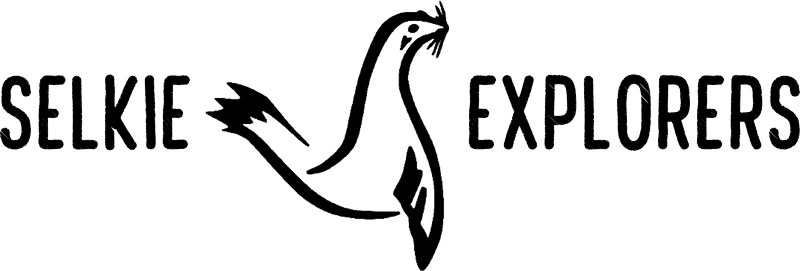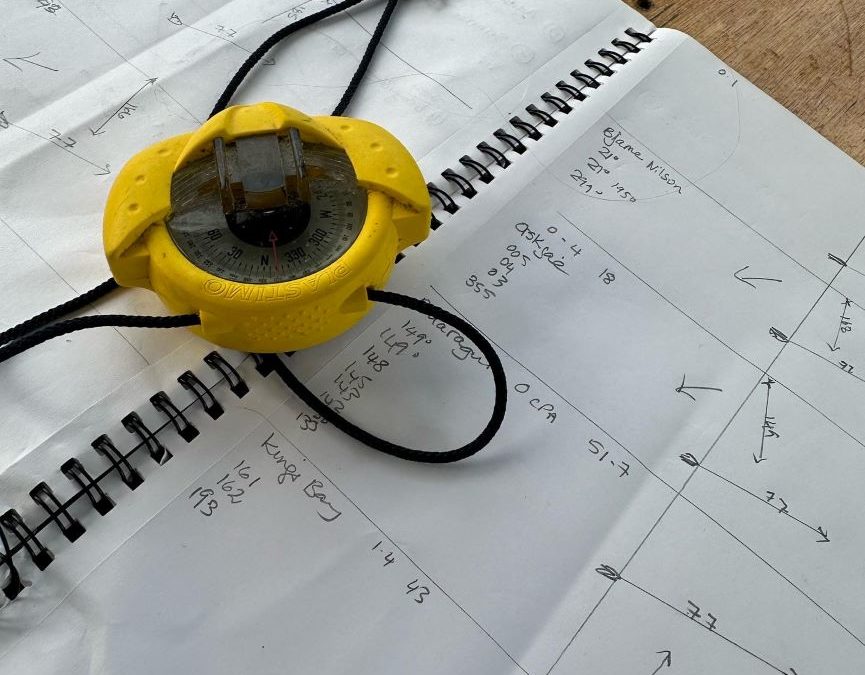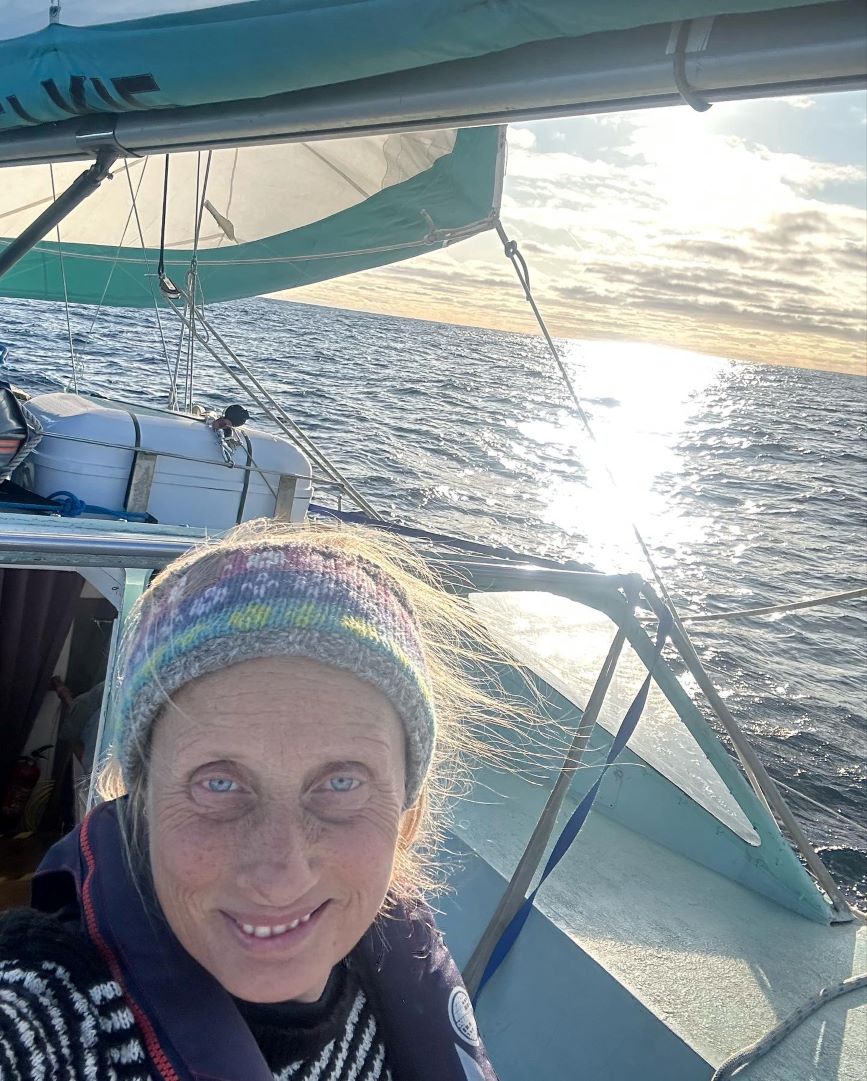At the same time as I was preparing Selkie’s deck with a more central jackstay to keep me very much onboard should I trip on my solo voyage across the North Sea to Norway, Reventas in Livingston were running a test on their pilot plant rig: does their process degrade virgin polymer? Result; NO.
I set sail in the early, early, early morning. Something woke me from my slumber. I believe it was the silence. For the two previous days, the bay had rocked Selkie relentlessly with 30 knot winds. I had relaxed over time as the objects I had lined up (wind turbines and a house roof) kept the same perspective, meaning the anchor held. It took those two days to stow, find, sort and make food. I suffer from sea sickness so to minimise its effect on me, I organised anything I might need during the crossing into arms reach. I had thought through my clothing, my sustenance, my navigational needs. What I had not counted on, was my pre-voyage nerves, which played havoc with my confidence. I spoke with Dylan, my son, the night before departure and voiced my concerns. Sensibly he told me “Don’t go! You go when you feel ready!” It was so simple and so easy. Of course, so I said, OK I’m not going. Tuesday evening, my head was not ready. I slept deeply, no longer anticipating the early start. When I woke to stillness at 3.30am, I got up and saw that the moon was out and shinning down brightly on Deer Sound in the East Orkney. I could see the tidal generator easily, the cliffs and spit on the western side. Everything was ready and I found that I was too.
AS I left the anchorage, skirted the obstructions, hoisted the mainsail, I did everything methodically. Ticking off a mental list, leaving no loose ends. Selkie was ready for the crossing. Within 30 minutes of picking up the anchor, the wind started up again. Soon it was blowing a steady 20 knots but all from behind the beam and Selkie was flying along on flat seas. Clouds began to overtake the stars but up ahead dawn was breaking through. I hollered my excitement towards the glowing horizon “woohoo!”.
The day goes in a whizz. I take naps, 10 to 15 minutes long, storing up my physical and mental energy for the night ahead. I’m making fabulous time and I know that I’m going for it.
My thoughts wander often to Livingston, where Jo and the Reventas team are prepping the pilot plant for its first feedstock trial using post-consumer plastic waste. LLDPE, Linear low-density polyethylene, currently unrecyclable, making its first passage through the pipes. A combination of feedstock supply: super smelly, twice washed, shredded then pelleted single-use milk pouches (india); supermarket front-of-store collection bins for one-time-use plastic bags; and some super-progressive councils’ kerbside single-use plastic collections. All this contaminated earth polluting plastic coerced around the Reventas plant in a series of chemical baths and rinses, a low power and low cost process: a missing link in the recyclable processing chain.
I wonder how it’s going for them as I race before the wind. I only cross one pair of fishing vessels while the recycling test is underway. The boats are running blind, not using their AIS, Automatic Identification System, but after a while, I see they have turned their transmitters on. I hope that the other vessels I meet in the night ahead will have theirs on. AIS is a clever technology using satellite that identifies vessels, their position and works out their heading, speed and bearing in relation to you. It tells you how close they will get (CPA) and how many minutes to when that will happen (TCPA) – showing the vessels running close to you on its “danger list”. It is revolutionary to say the least.
With the AIS, a handheld bearing compass and a cool head I entered a night plentiful with fishing boats. These are not your quaint vessels but 70 metre monsters, going at speeds faster than Selkie and towing gear behind and between, possible for miles. I didn’t take chances. There are rules of the road in shipping, a hierarchy based on the ability of a vessel to get out of the way. Selkie, as a sailboat, is way more manoeuvrable than something towing a gigantic heavy net. I got out of the way.
Dodging boats in the dark was hampered by squalls and heavy rain. After four hours of effort, I beheld something obscene leering through the haze. Unearthly, emerging from within that curtain of rain, a humongous blazing city on stilts stood sentinel across my path.
Again, I switched course, and passed north of a conglomerate of rigs and supply vessels. This passage took me into the witching hour and halfway through, the clouds cleared, and a half-moon emerged, casting aside any lingering demons. All wind dropped too. Selkie’s mechanical sail propelled her through the quietening seas towards dawn and Norway.
As I drove eastwards towards the mountainous horizon of Norway, Reventas engineers studied the results of their trial. They had successfully produced near virgin polyethylene from the gross raw material: a polymer with all colours removed with a good mechanical testing result (the melt flow index the same as virgin polyethylene).
Something dared, something gained.
For me, the hardest part of my challenge was the self-belief; that I could do it. I had studied, practiced, and prepared but still, believing that I, Celia, was capable of single handing across the North Sea was troublesome. This time the anticipation of the venture proved much harder than the doing of it.
Once I arrived in Norwegian waters, I was all about celebration. I danced on the deck, waved at the passing boats. The population of Norway is five and a half million and there are one and a quarter million leisure boats, that’s more than 1 in 5 Norwegians who have a boat – Seafarers indeed. On that balmy Thursday evening in October, there were a few about as I motored across the fjord, into the fairway amongst small islets and lobster pots, to turn into the wee inlet and pontoon that nestles beneath the house of a dear friend, Rune.
Sailing across the North Sea has been done many times by countless people. It is only something extraordinary to me. My crossing was a success for me mentally and as is the case with any new venture, the doing of it informs the next steps – for me and Selkie. Selkie’s motor, which has worked reliably to bring me safely into countless ports, now needs some attention. I have contracted an engineering firm to replace some worn parts, apparently a relatively painless task starting tomorrow.
As for Reventas, their successful result also directs what happens next. Though firstly CELEBRATE! They’ve done it – the good minds in Livingston have achieved is a first! We no longer need to just imagine a world where we can recycle all the detritus plastic, it’s a reality. The first commercial plant is already in the planning stages, looking to open for processing in 2026 and as for me, I no longer just dream to think how we can recycle marine plastic that pollute our seas and coastlines, how we can cease drilling new oil fields. There is going to be a way!
Next year, I’m looking forward to making marine plastic collection a part of each voyage. Selkie’s 2024 schedule is live www.selkie-explorers.com/schedule-2024/ and if none of the dates suit you, contact me and I’ll see what can be done.

Celia


